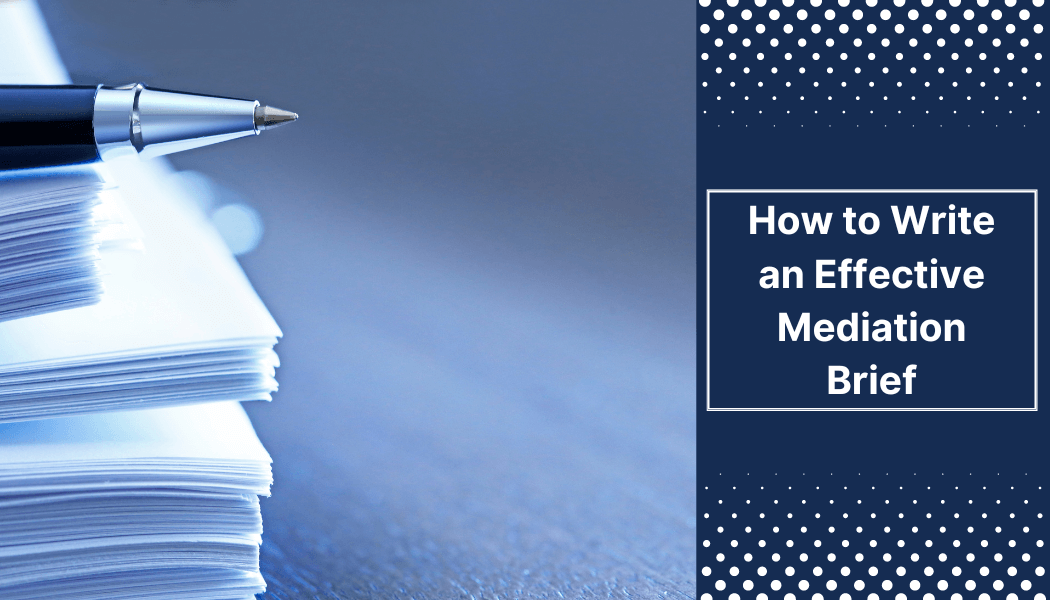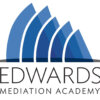Earlier this year, my Weinstein International Foundation (WIF) colleagues sponsored a mediation brief writing competition. The goal of the competition was to inspire and develop mediation brief writing skills in law students from around the world. In preparing for the competition, it became clear to my colleagues that little has been written about the significant role mediation briefs play in the broader topic of mediation advocacy. Additionally, little formal criteria could be found to assist the judges in evaluating and scoring brief content.
All too often, mediation brief writing has been given little attention by legal professionals eager to move on to trial without acquiring the advocacy skills necessary for persuasion. My colleagues and I are constantly amazed at the countless hours that lawyers spend writing legal briefs and summary judgment documents when the majority of cases are settled before trial. Their failure to appreciate the importance of an effective mediation brief and understand what goes into writing one represents a missed opportunity.
What is a mediation brief?
The mediation brief provides an opportunity to present your client’s position in a compelling and persuasive manner and influence the opposing parties about the goals of settlement.
If mediation aims to change the mindset of others involved in a dispute, a properly prepared mediation brief represents the earliest and potentially best time to shape their thinking. For most mediators, the “I know a good brief when I see one” criteria represents the extent of their conversation about what makes an effective brief. Their lack of clarity does little to advance the learning of others.
What special factors is it about a mediation brief that differentiates one that persuades from one that further separates the parties? What particular factors do experienced mediators value most when presented with a brief?
What to Consider When Writing a Mediation Brief?
Share the brief with the other parties whenever possible
The quintessential first issue for every brief writer is whether to share it with others involved in the case or simply provide it for the mediator’s private consideration. I believe briefs should be shared whenever possible since the brief is the first step toward transforming the opinions of others. It will also promote the free exchange of information once the mediation is underway.
Parties who wish to address confidential information with the mediator or provide suggested settlement ideas in advance of the mediation can do so in private pre-mediation phone calls or a separate confidential mediation brief.
Avoid the repurposed legal document
All too often, attorneys who are pressed for time or don’t understand the value of a well-prepared brief opt to submit an existing legal document to the mediator, such as a pleading or motion. In the process, they have missed an opportunity to clearly and succinctly state their client’s position. Whenever possible, strive to write a persuasive statement that is different in tone and content from other documents regarding the basic facts of the case.
Summarize facts efficiently
Many mediators suggest that parties submit mediation briefs of a certain length, often no more than ten to fifteen pages, since the amount of detail required for trial or arbitration is not essential for a facilitated negotiation process. Yet, many a night is spent by mediators reading twenty-five to thirty-page tomes, plus reviewing multi-page exhibits. The effective brief is not a James Michener novel and should seek to capture, not dull, the reader or mediator’s attention.
Cite supporting case law appropriately
Many disputes have at their core a finite legal issue or two that is worthy of developing in detail in lengthy mediation briefs. In those instances, don’t hesitate to highlight statutory language or caselaw, always underscoring the most important words or phrases for consideration. Most mediators don’t need a primer on the elements of a negligence cause of action or what other legal issues a party needs to prove to establish a breach of contract. Your key legal arguments will be diluted if the mediator needs to cull important information from an overdeveloped legal presentation.
Set the proper tone
Herein lies the true art of mediation advocacy. The most effective mediation briefs thread the needle between forceful advocacy and adopting a tone of conciliation. They implicitly or explicitly convey that the party is there in good faith, willing to consider appropriate concessions, and looking to engage in settlement discussions collaboratively. The best mediation lawyers preview their briefs with their clients while explaining why the brief needs to convey the right message and why it needs to read differently than a summary judgment motion.

Look to persuade, not put off
Again, the challenge is to convince others of the strength of your position without alienating them in the process. The most effective mediation briefs avoid irritating words or phrases that cry out for a response. They marshal the relevant facts without exaggeration or hyperbole while acknowledging gaps in the road to deductive conclusions. In sum, they reflect the best attempt at an intellectually honest assessment of the parties’ position, presented in a manner that causes the other side to reconsider, not immediately respond.
Imagine and address what the other side needs to claim success
If the goal in mediation is for all sides to agree, then that process should begin with developing a mindset of what the other side(s) need to gain approval from their constituents. The author of the seminal treatise Getting To Yes, Dr. William Ury, describes this process as helping the other side “build a golden bridge.” It’s never too early to suggest solutions to a seemingly intractable problem, particularly ones that align well with the other side’s interests. Presenting these types of solutions may lend themselves more comfortably in a private brief submittal rather than sharing with all parties.
Don’t overlook negotiation history
Many negotiations have stumbled out of the starting blocks, if not broken down entirely when parties have not adequately informed the mediator of all historical and prior settlement negotiations. This includes the formal exchange of demands and offers in prior negotiations as well as any informal discussions that might have shaped expectations coming into the mediation process and each party’s final settlement position. An effective mediation brief will include conversations and written documents or other communications between attorneys or clients that might impact starting negotiation positions if not the ultimate settlement outcome.
Address obstacles to settlement
Any obstacles that have previously occurred in the form of court delays, an inexperienced judge, or other shared concerns can be included in the mediation brief. If the mediation advocate thinks there are difficult personalities, a challenging client, or other sensitive issues, a private statement submitted to the mediator or a phone conversation may make sense.
Acknowledge weaknesses
The most effective mediation briefs honestly assess both the strengths and weaknesses of one’s position. The successful mediation lawyer aims to develop trust and credibility with the mediator and the other side. What better way to begin that process than acknowledging missing evidence, adverse testimony, or ambiguous legal precedent? This approach allows the brief to address shortcomings in a way that demonstrates to the other side that all perspectives have been considered.
Propose workable, creative solutions
One of the many benefits of the mediation process is its flexibility and creativity in fashioning solutions that match up with the interests of the client. Mediation briefs that limit the focus of their discussion to judicially available remedies alone, error by omission, and overlook the potential of a win-win result. While being mindful of the propensity for opposing counsel and others to reject a proposal simply because it comes from an adversary, the mediation advocate should consider and propose all potential solutions.
Timing considerations for the mediation brief
The timing for sending out the mediation brief can be as important as the substance of the brief itself. While a brief may be substantively excellent, it may not have the desired impact if it arrives too late for the mediator or other parties to consider the arguments and adjust their positions.
For example, a non-confidential brief sent well before the mediation starts to the plaintiff’s attorney may alert them to issues that require more research or discussion with their client. It may also allow them time to discuss matters described in the brief with experts and to obtain additional information that could prove valuable to the outcome.
As a further example, a plaintiff’s attorney who sends out a brief addressing liability issues and damages weeks ahead of the mediation to the defendant’s lawyer and the defendant’s liability insurer may afford the insurance adjuster time to make arrangements for any extra authority needed to settle the case. Sending out a brief the evening before the mediation begins can result in lost opportunities for deriving the best possible outcome for a client.
Make effective use of exhibits
A mediation brief heavy with unnecessary exhibits probably won’t get read and won’t be very useful. Including a summary with a few key exhibits and pieces of evidence that underscore the strengths of the case or the weaknesses of the other side is a powerful way to get points across. Giving careful thought to the most compelling exhibits to include in a brief can go a long way to build influence not only with the mediator but with the other parties as well.
In conclusion, mediation advocacy represents the next frontier in training new attorneys to realize their full potential as client advocates. Effective mediation advocacy begins with a well-thought-out and crafted mediation brief that strikes the right balance of substance and style. Just like those law students in the international competition, learning how to write a persuasive and effective mediation brief represents a true art form that is very different from writing other standard legal documents. For attorneys interested in optimizing results for their clients in a facilitated negotiation, start by mastering the art of mediation brief writing.





